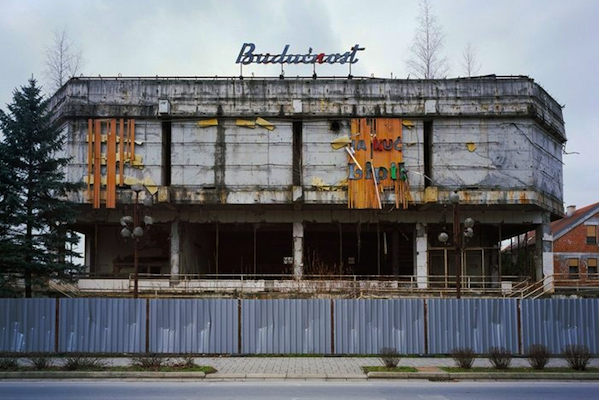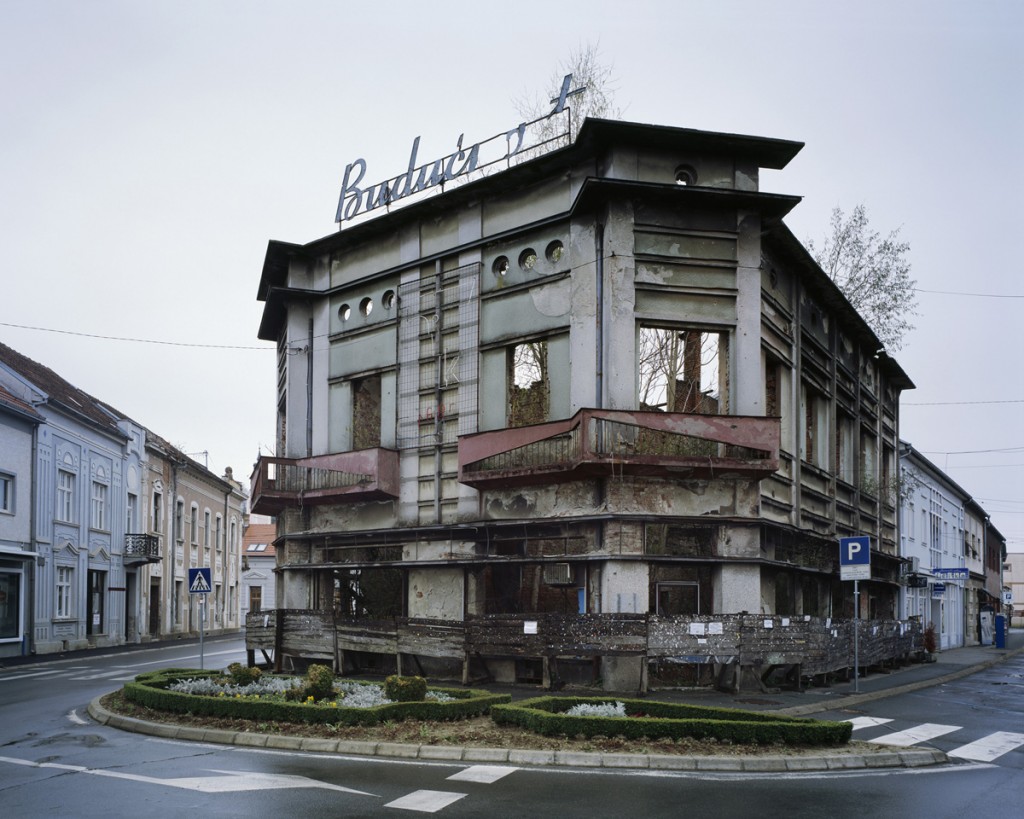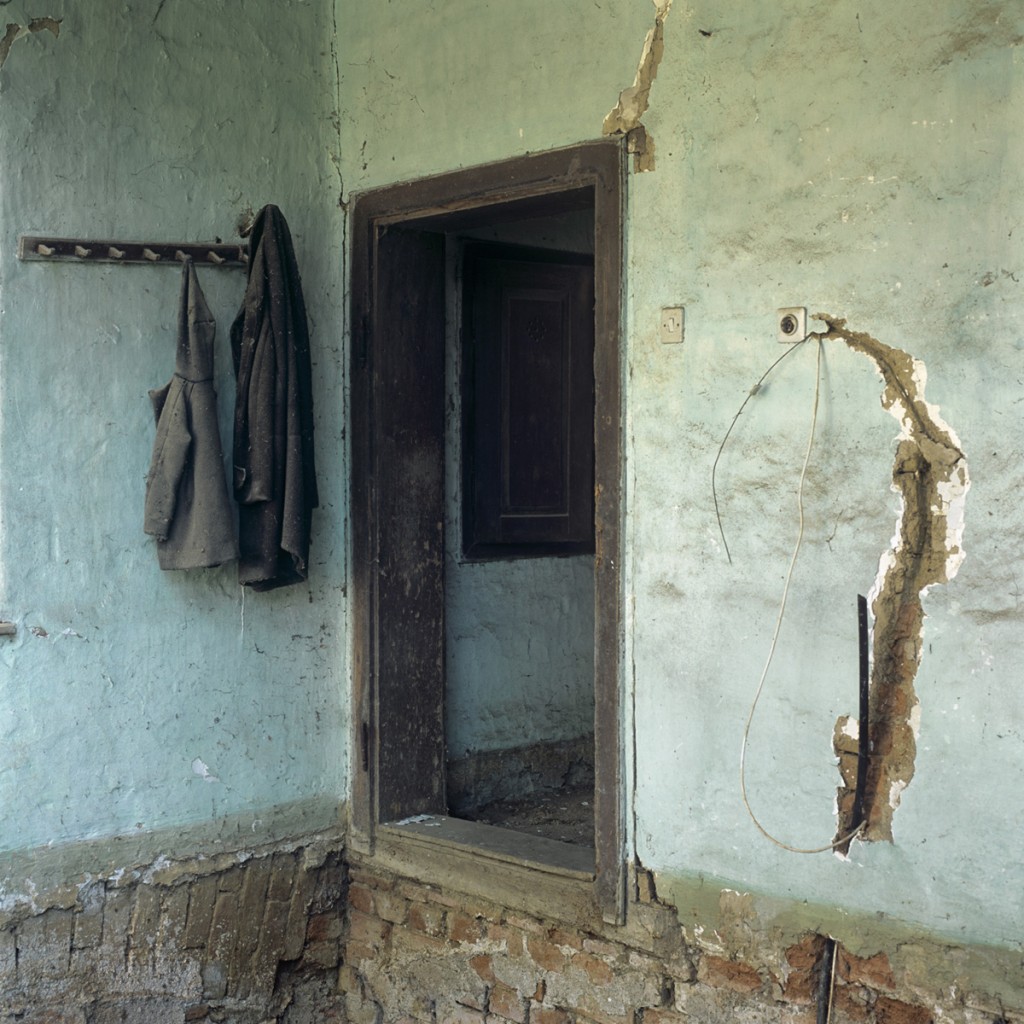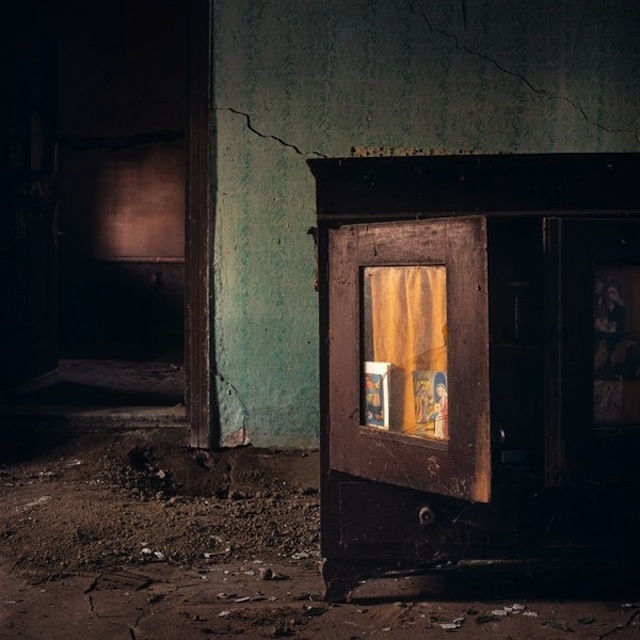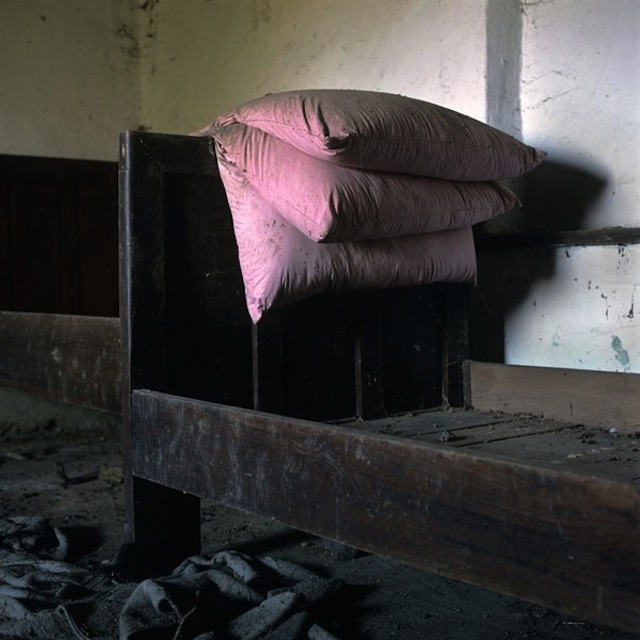Photography
Image as metaphor: the photography of Bojan Mrđenović
Budućnost, a recent series of photographs by Bojan Mrđenović, comprises images of neglected department store buildings in eastern Croatia. While the subject of the photographs is the buildings themselves, many with architectural details that hint at a bygone era, Mrđenović is also addressing the abandonment of the buildings and the socioeconomic system they represent.
Several of the buildings are equipped with a sign proclaiming the name of the chain – Budućnost – in retro lettering. In Croatian, “budućnost” means “the future”; thus named, the department store carried with it promises of progress and positivity.
The Budućnost chain of department stores was established in the town of Pakrac in 1954. Though owned by the state, department store employees also had shares of stock, contributing to a system of collective ownership and economic success. The company was privatized after the fall of communism, and it eventually collapsed. Now, many of the Budućnost buildings remain in limbo, crumbling as their owners mull over what to do with them.
The idea of photographing these buildings came to Mrđenović somewhat spontaneously. He was driving through the area and, attracted to the Budućnost signs, snapped a couple of quick photographs. Later, when he saw several of the photographs together, he recognized their narrative potential. “[They were] representative of the whole situation, the change in new social relationships that were established. I saw the buildings as a metaphor of this transition.”
Mrđenović then began more systematically researching the buildings, seeking out their locations, and taking multiple photographs of them. According to Mrđenović, it took a substantial amount of time to pinpoint the best season and time of day to create the most appropriate atmosphere for each of the buildings he located. “This project looks simple in a way,” says Mrđenović of the effect of seeing the final images together in a gallery setting. “But it actually took many years of exploring the subject and doing field work [to determine] the best way to represent this idea.”
One of the buildings, a favorite of Mrđenović, has a particularly colorful history. Today a decaying modernist construction topped with a fragmented Budućnost sign, it was once a secessionist palace known as Kuća Grgurić, built in 1906. Mrđenović explains that when it became property of the communist state, all details pointing to a bourgeois lifestyle were removed, and the façade of the building was almost completely remodeled. “[That building] reflects all of the changes during the 20th century,” he notes. “It also stands today in the city center as a symbol of unpredictability, of the current state of all of these changes.”
Asked about the aesthetic appeal of the images, Mrđenović responds that while the buildings are visually arresting, he always aims to produce work that is also rich in concept or narrative. “They’re aesthetically particular and interesting, but what attracted me to make it into a project was the idea behind it. … In good works of art, in particular photography, you can find many layers of quality and many layers of reading or analyzing the subject. When I decide what to do, I also try to build different layers of reading inside of the work. For me it’s important that the subject has some narrative potential, or a good idea behind the story. … I like a balance between the concept, the documentarian values of photography, and the aesthetic elements.”
The same concern is apparent in Mrđenović’s other photographic projects. With the series Welcome, he photographed the interiors of homes abandoned by families who left the countryside for a more urban life. Reconstruction, conversely, focuses on the bare brick homes being built for the families who fled Slavonia during the Croatian War of Independence in 1990 and are now returning. The Spa, a series of images of a spa complex in the town of Daruvar, presents the once-fashionable complex as an outdated “relic of the old system.”
Socioeconomic transition and how its resulting changes are manifested visually, in the present appearance of structures and spaces rooted in the past, is a preoccupation for Mrđenović, who says that photographing such subjects helps him to make sense of these occurrences.
“I feel that I live in an environment of constant, rapid changes. Unpredictable changes. Maybe this way of recording my environment is a way of understanding the world … Since the changes are so fast, and it happens that one system pushes the former one out, it’s a challenge for me to understand and record how it really works and how it is reflected in my life and the life of [anyone] who is part of the system in which those changes are implemented.”
Mrđenović, recognizing the fleeting nature of his subjects, views them with an element of urgency; in this sense, his photographs take on a documentary function. “Some pictures I took two or three years ago would be impossible to take today, because the environment has already changed. Some houses from the series Welcome, for example, have already collapsed.”
Mrđenović explains that he actually has many interests, but these subjects have taken priority because he knows that if he does not record them now, he may not have the chance to in the future.
Working simultaneously on several projects, however, allows Mrđenović to explore these other themes. “I’m interested in public spaces and spaces where groups of people gather. For example, I shot footage of nightlife on a Croatian island … that I used to construct a narrative about social conventions within a group of people who came to a particular place to party. It’s also about relations between men and women and codes of social behavior. It’s an observatory work.” The entire film, Zabava, is available to watch online.
Mrđenović is currently finishing his Master’s degree in cinematography from the University of Zagreb. He is the 2013 winner of the Architecture category at the Rovinj Photodays Festival, and he recently exhibited Welcome at Klovicevi dvori and Budućnost/The Future at HDLU in Zagreb, Croatia.
Written by: Elaine Ritchel (@elaineritchel)
